Colorful continent. Beautiful tribes of Africa
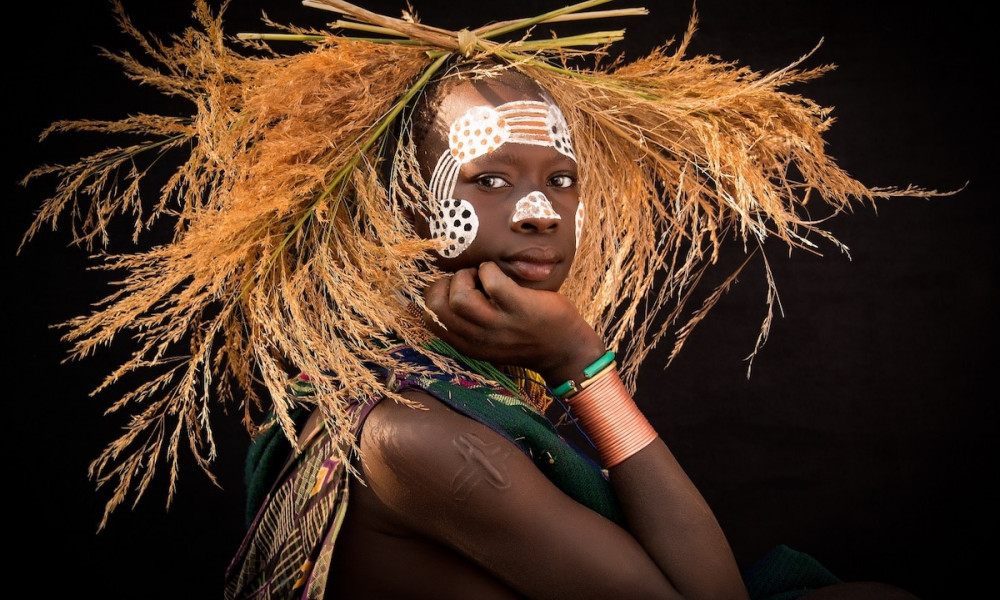
While the character and temperament create personality of an individual, the rules and customs form nations native to an impressive in size continent of Africa. Thousands of tribes, about fifty nations speaking different languages and practicing different religions, greet every new day according to their traditions. In dusty everyday life, the population like "priests of Melpomene" from day to day support the magical atmosphere with spectacular dances and amazing costumes. Photo mirvkartinkah.ru
Photo mirvkartinkah.ru
The Maasai: proximity to civilization
This tribe is balancing on ancient traditions and allows Europeans to glimpse behind the screen of their private life, get familiar with their life style and even to participate (on a fee basis) in traditional ceremonies, such as weddings. Tall and slender, they impressively perform their competitive jumping dance adumu: warriors are bouncing up drawing attention of future brides.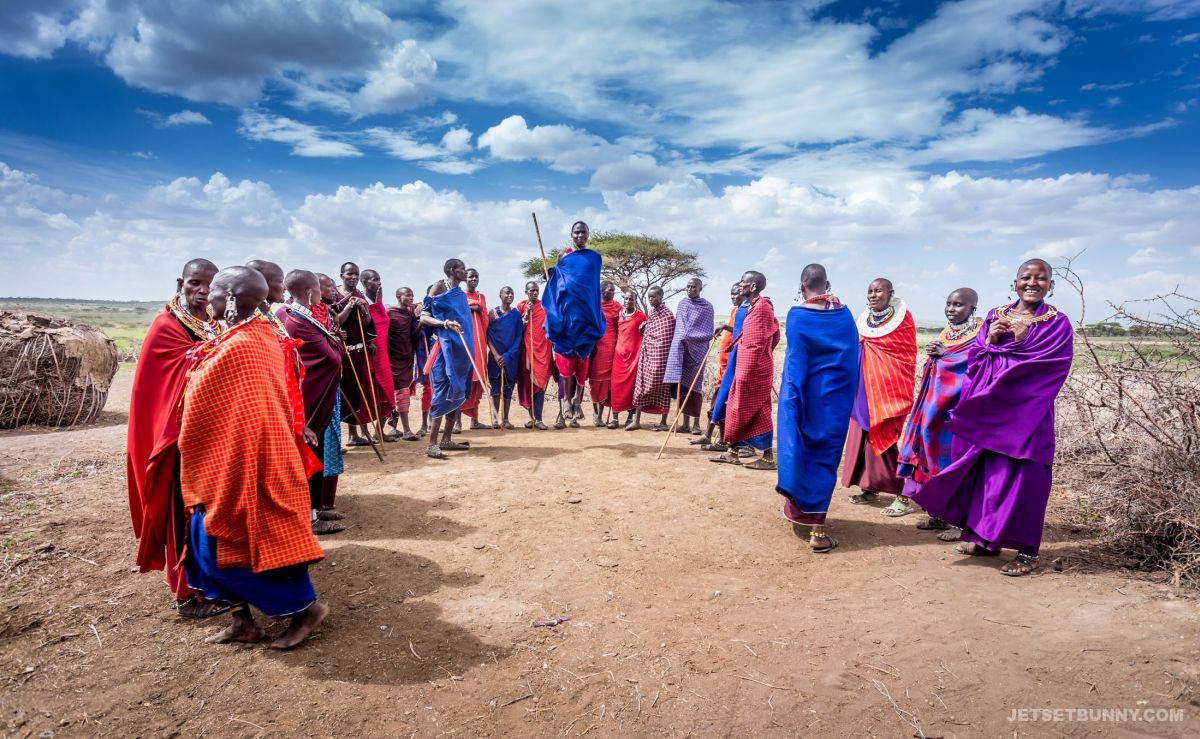 Photo jetsetbunny.com
Photo jetsetbunny.com
Red is a favoured colour, they prefer to wear red sheets traditionally wrapped around the body (shúkà), and contrasting jewellery - white bracelets and beads look great at background of bright gowns. They also enhance their look with imposing metal structures in ears, women shave their heads, decor lips with plates,and willingly lose two front teeth. The Maasai firmly believe that all the animals of the planet belong to them, so they are not ashamed to steal cattle from a stranger.
The Surma: metamorphosis pictures
White and orange-red paint is notable in the spectacular and expressive illustrations of the tribe inhabiting the valley of Oma River in southern Ethiopia. Getting to know it is like a reward for impenetrable way through the mountain ranges. This panethnicity lead an alienated way of life, build huts made of straw and take care of livestock. They know how to enjoy their freedom, you will not see them begging coins from travellers as do tribes who live closer to civilization. The Surma identify themselves and express their attitude to the world by thin or thick lines swirling in intricate scarification patterns on their skin. Female make-up is distinct for smooth rounded lines; male body art consists of strict geometric shapes. The rhythms of nature inspire, so women and children often decorate their heads with elegant hats constructed from branches, twigs and feathers. Will such motives be a muse for European fashion? It remains to follow fashion trends.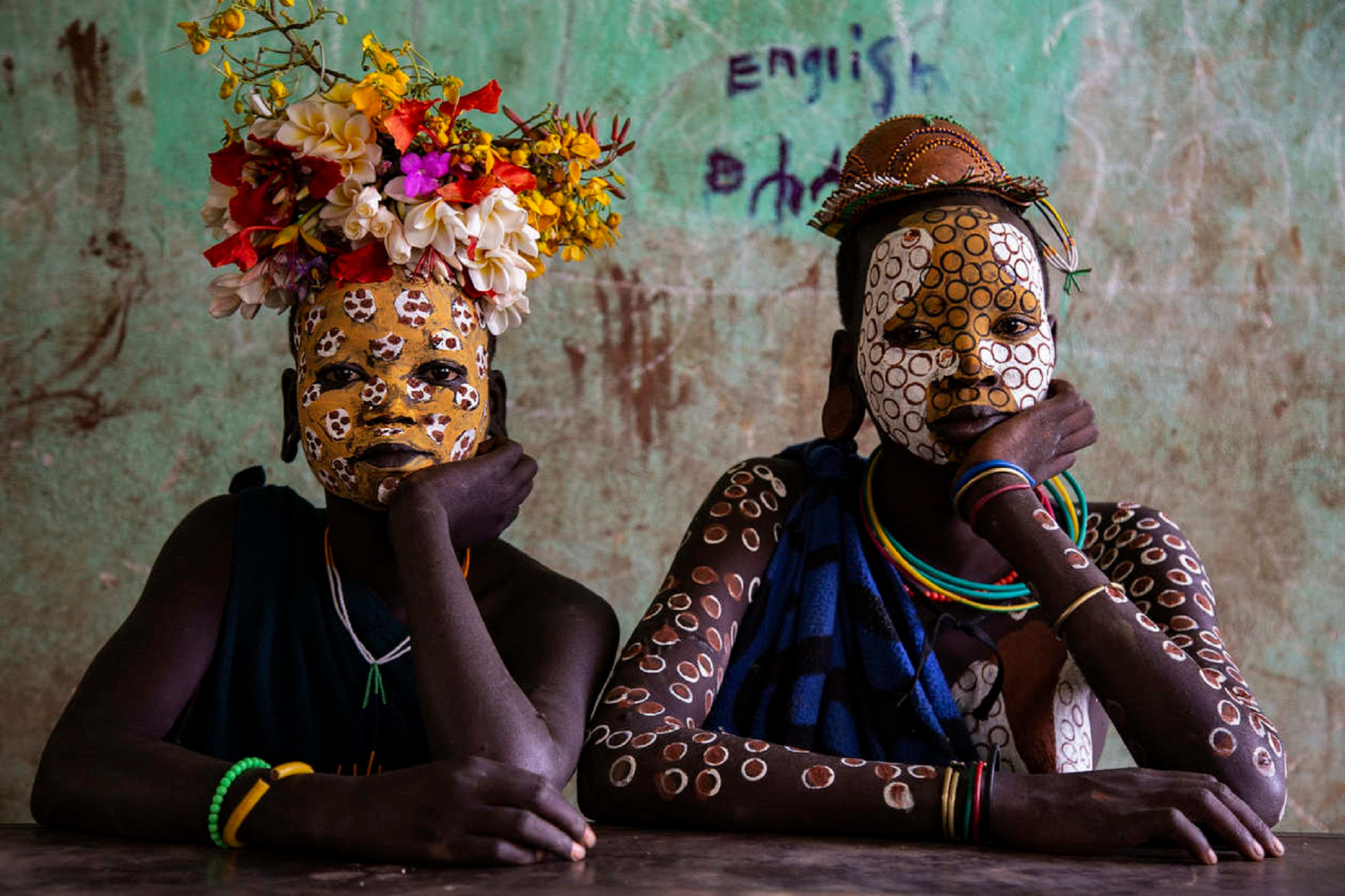 Photo nypost.com
Photo nypost.com
The Wodaabe: the cult of beauty
Every year the representatives of the Wodaabe tribe are getting ready for arguably the most intense beauty pageant in the world. And an intrigue is enhanced by the fact that the date and venue are kept strictly confidential. Male beauty as a cult, and every effort is taken to emphasize it: in make-up dark tones emphasize expressiveness of eyes and cheekbones; hair styles compete in sophisticated decorations, all for beautification. The event is curious by the fact that is it designed exclusively for male contestants. The role of women is to notice the brightest one and arrange a magnificent wedding afterwards. The highlight of a festival is eye-catching dance the yaake: confident movements, clapping and eyes spin. Spectacular!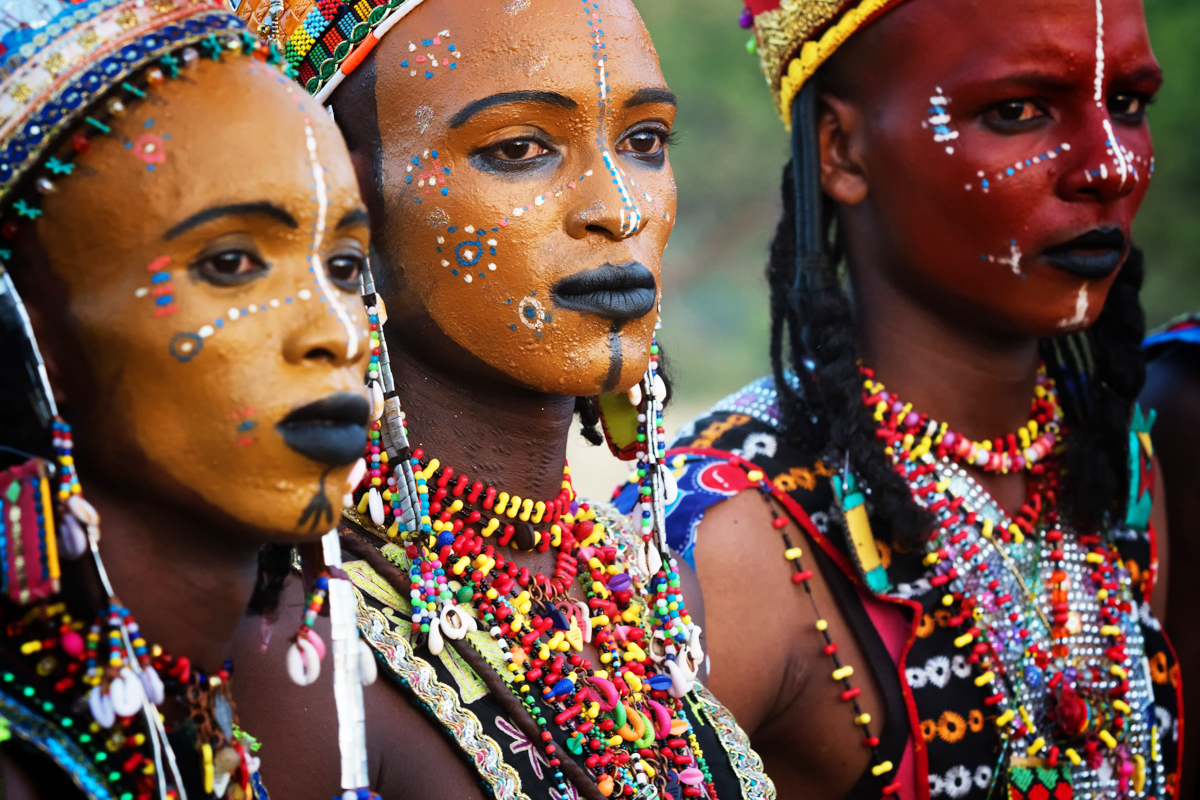 Photo pipermackayphotography.com
Photo pipermackayphotography.com
The Turkana: beaded collars
Beaded necklaces of catchy colours: yellow, red, blue adorn necks of women from Turkana pastoralist community. These ladies are somewhat aware of an expression "beauty requires sacrifice" because the necklaces are very heavy and can weigh about three kilograms. Shoulders are further accentuated by large beaded collars, overhangs around neck.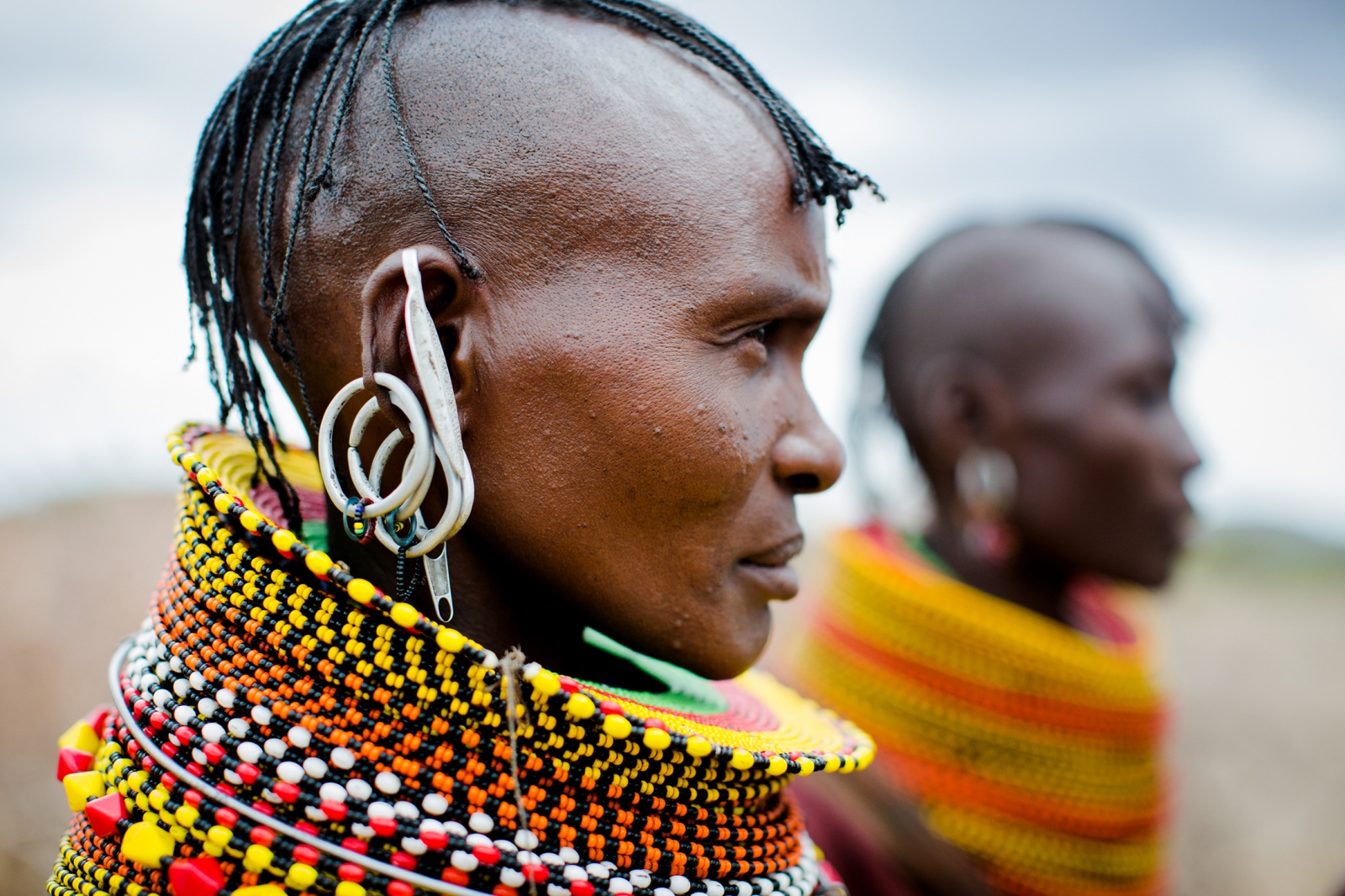 Photo visura.co
Photo visura.co
Massive earrings and complexity of hairstyles are in high esteem and attract attention. Interestingly, the tribe residents use small stools (known as ekicholong) as an accessory. It may be take with someone going for a visit. A useful feature is protecting any ceremonial head decorations from being damaged - at night they put head on a stool. Women are notable fordignity of bearing, especially when carrying water: they carry 20-liter containers on their heads.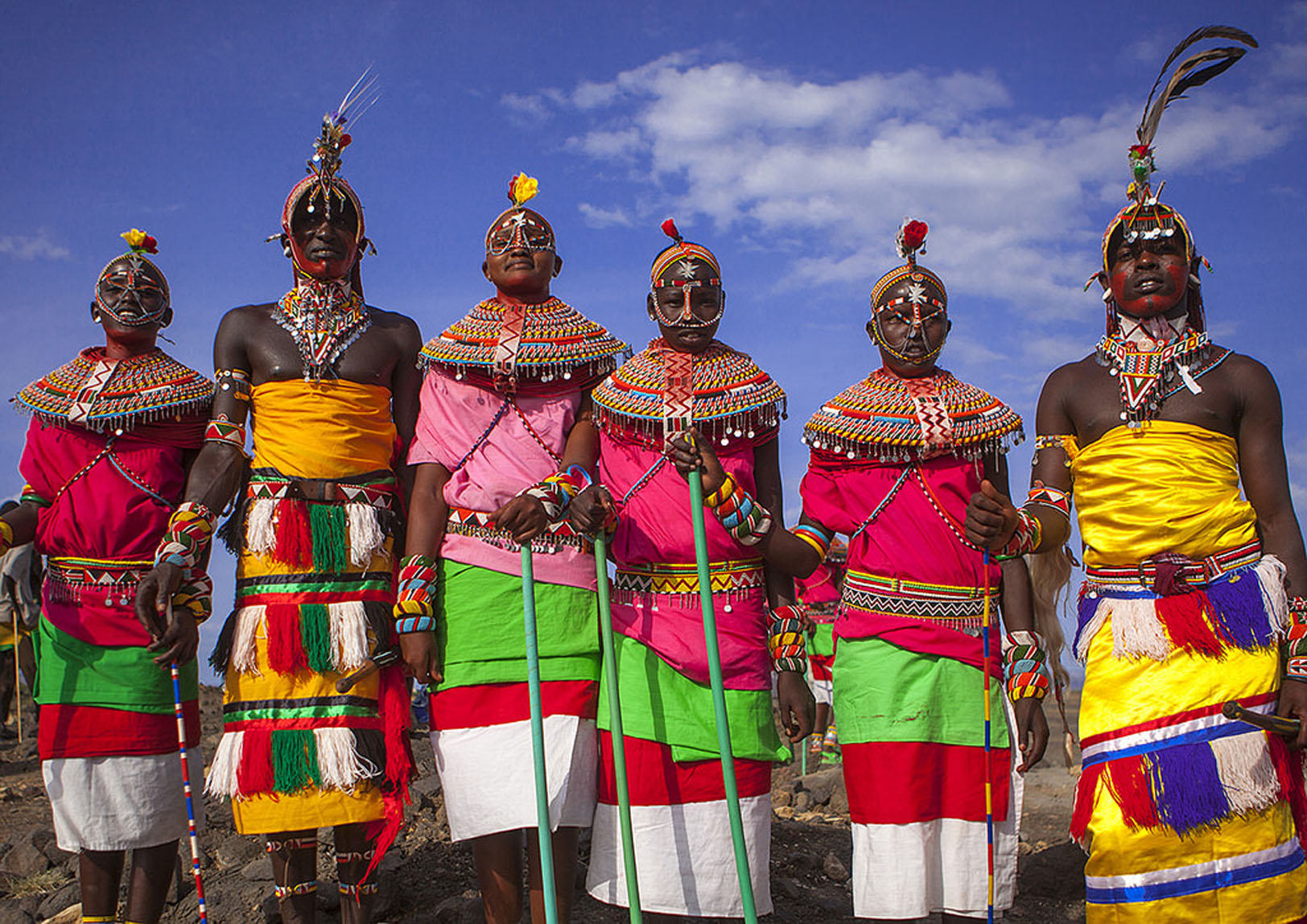 Photo erodoto108.com
Photo erodoto108.com
The Kikuyu: Indian motifs
The farmers' daily routines are carried out in the vicinity of the city of Nairobi by the Kikuyu tribe, a Bantu group of people. Talented to agriculture, they successfully delegate responsibilities among the members of the group, growing cane, beans, millet and tobacco. Coffee glorified the tribe and has become a brand in the world.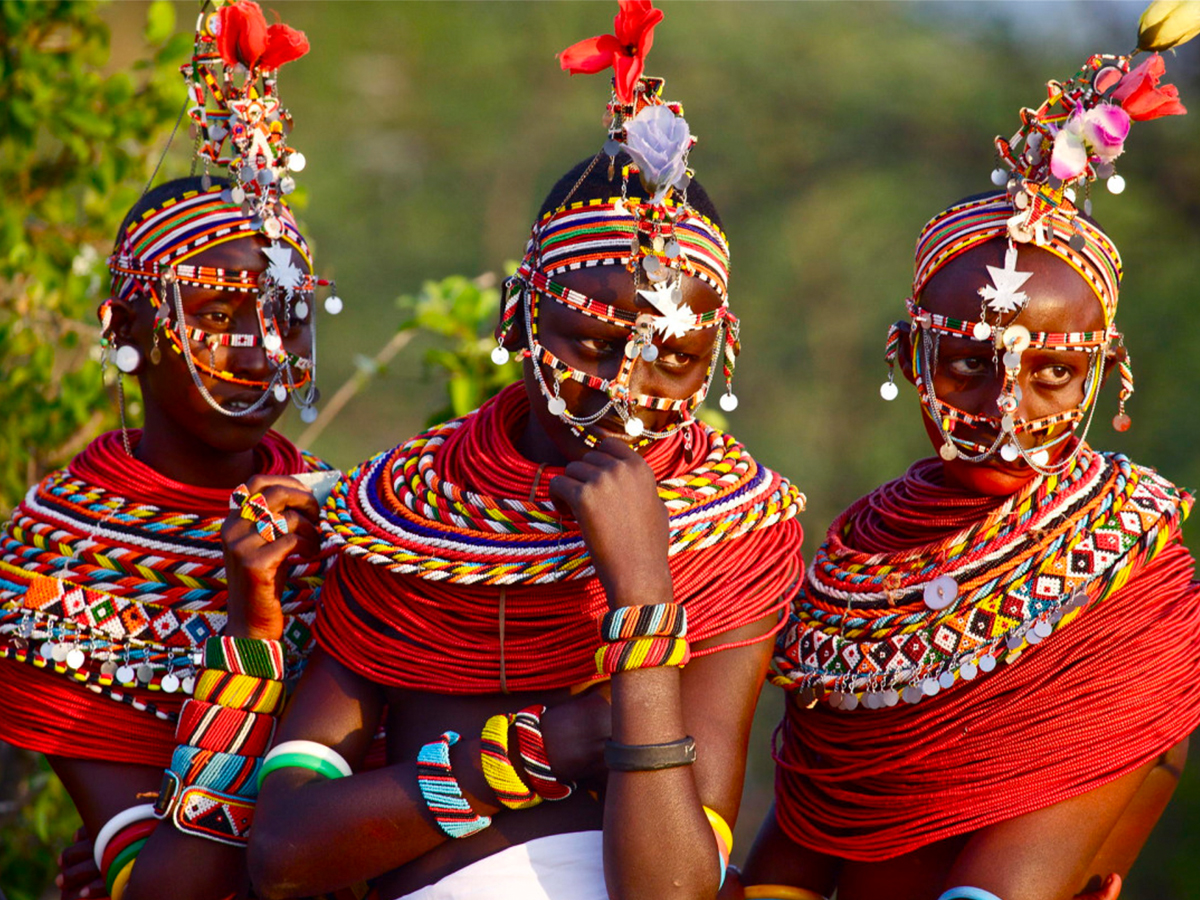 Photo eco-resorts.com
Photo eco-resorts.com
Hardworking and appreciating art of pottery, they have not forgotten about the beautiful side of appearance and have their own zest in clothes. animal skins as capes look like dresses, and necklaces made of cowries shells and feathers give solemnity to the look. The Kikuyu pride themselves on their garments which are absolutely untypical for other regions of Africa, so they are valuable.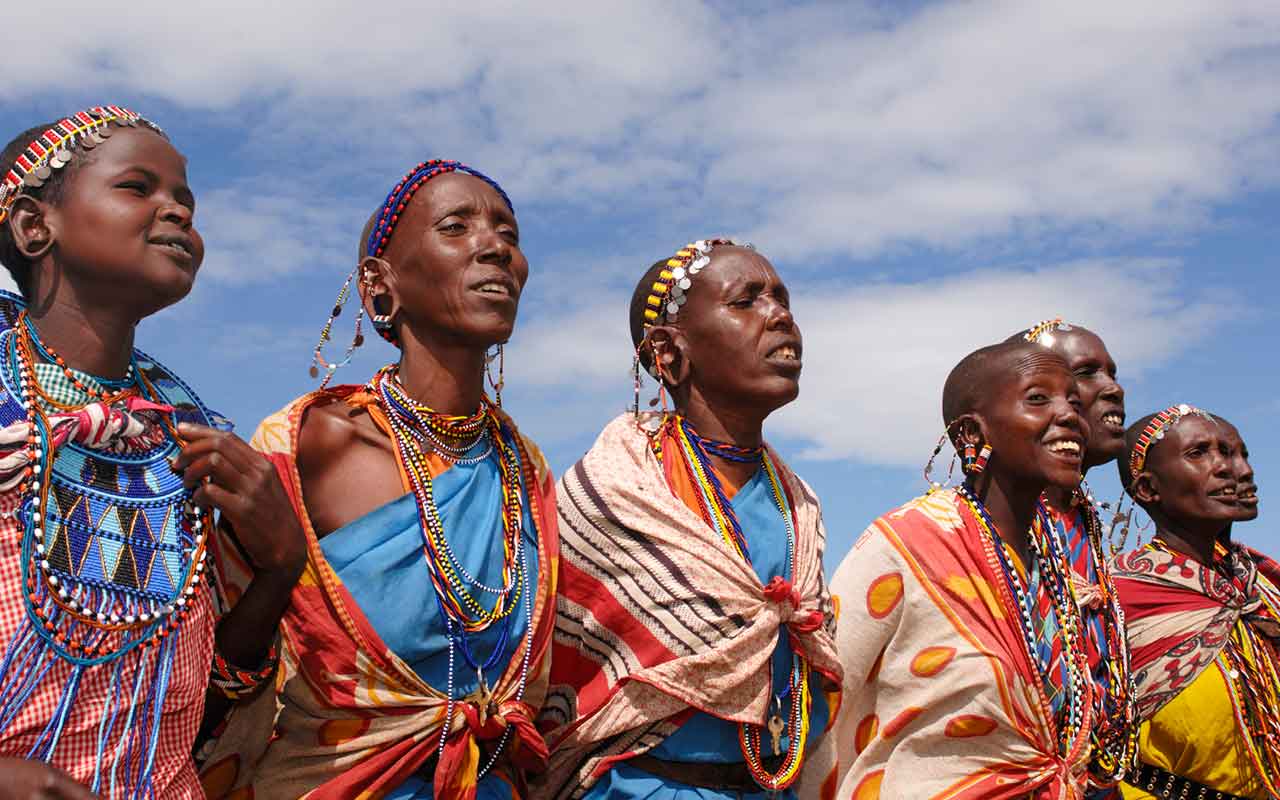 Photo makemytrip.com
Photo makemytrip.com
The Himba: braids of ochre colour
Minimum of clothes and maximum of artless grace are typical for the nomadic tribe of Namibia. They still cherish age-old customs, build cone-shaped dwellings, and trade in breeding livestock. They are loyal to their rituals and are not inclined to modern clothes. Women, in contrast to the ladies from other tribes, do not shave their heads, they weave braids, covering them with a mixture of ochre, oil and ash. They wear skirts made of leather with brass accessories, leaving the top exposed. Their legs and neck are decorated with exquisite bracelets of dark shades. Men do not avoid hats, but only married afford to build a turban. The Himba tribe show calm and consistent appearance. Are they the same inside?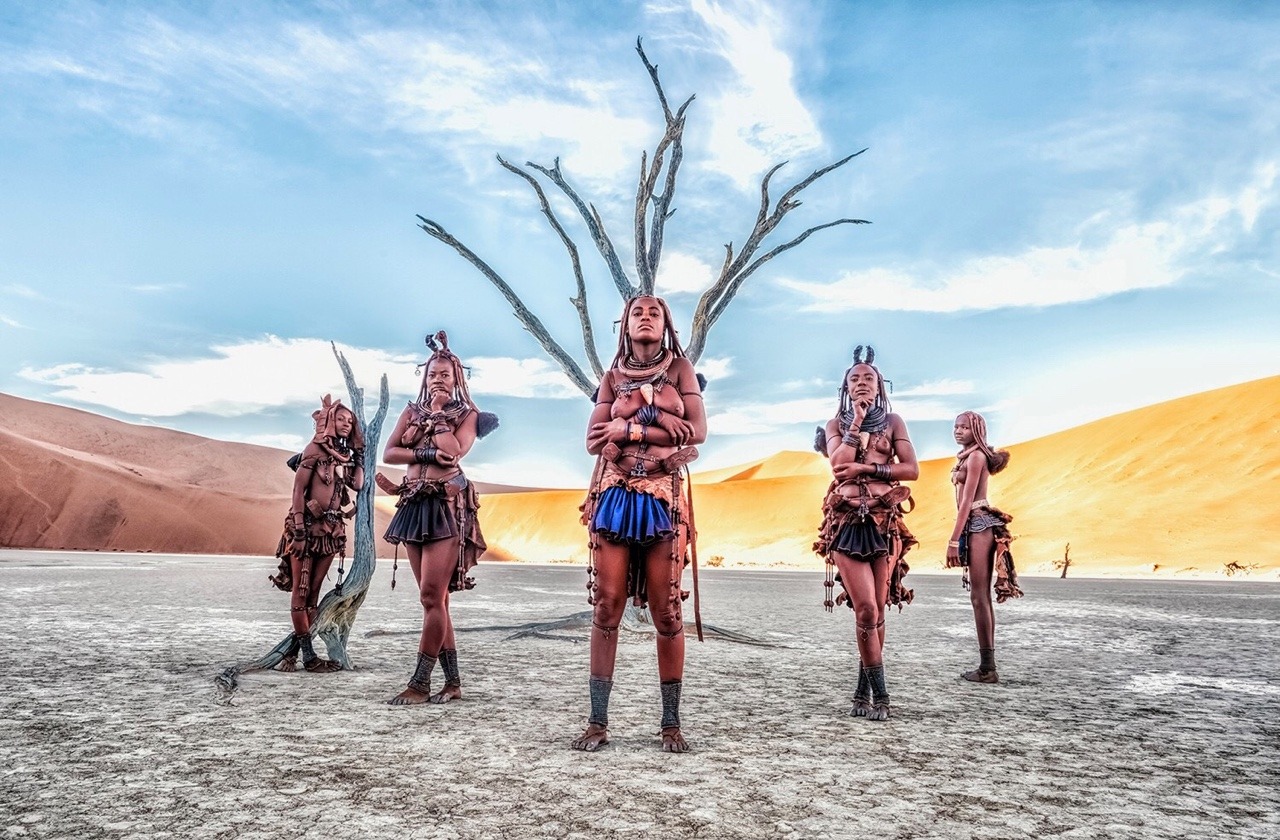 Photo forafricans.tumblr.com
Photo forafricans.tumblr.com
The Karo: flower exhibition
The tribe living on the banks of the Omo River not by chance is nicknamed fish eaters. Their diet consists of water gifts, and that knocks them out of meat food trends. They go hunting crocodiles using harpoons and canoes. Perhaps that's why men prefer more aggressive illustrations on body. Mods with corn cobs in their hair, decorated with shells and beads. And of course, flowers are mandatory attributes of vestments.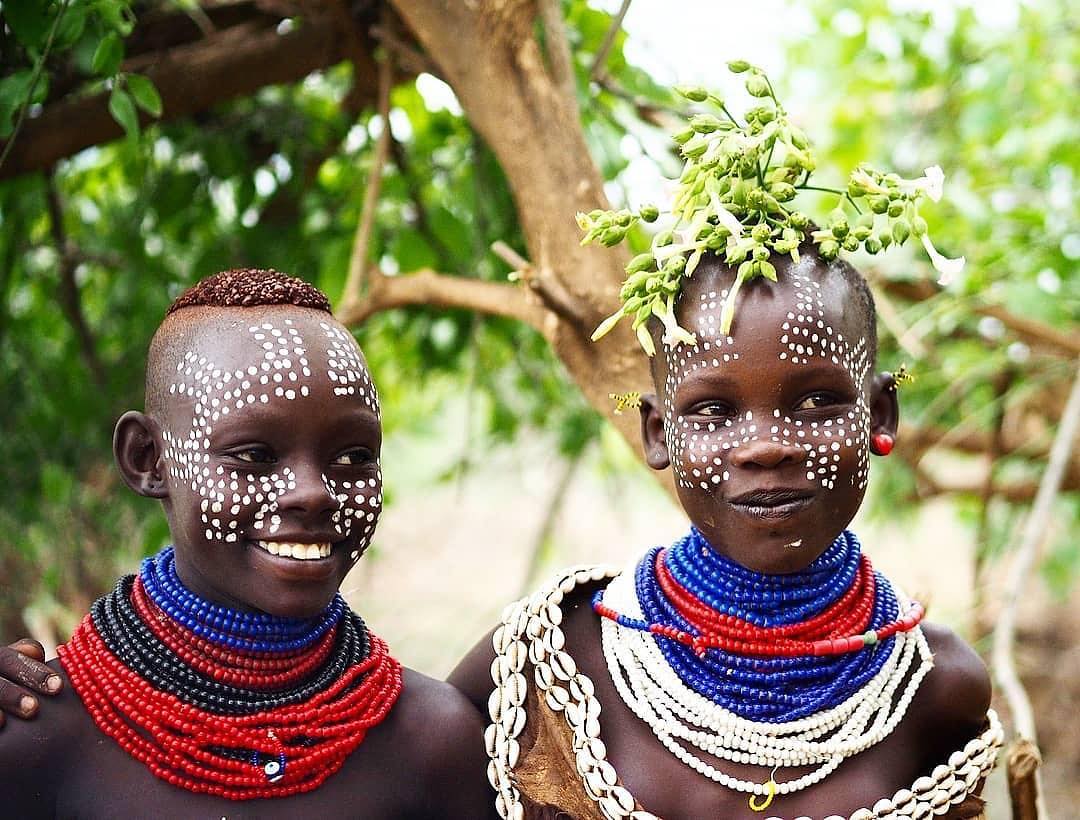 Photo gramha.net
Photo gramha.net
Cover photo mymodernmet.com





















